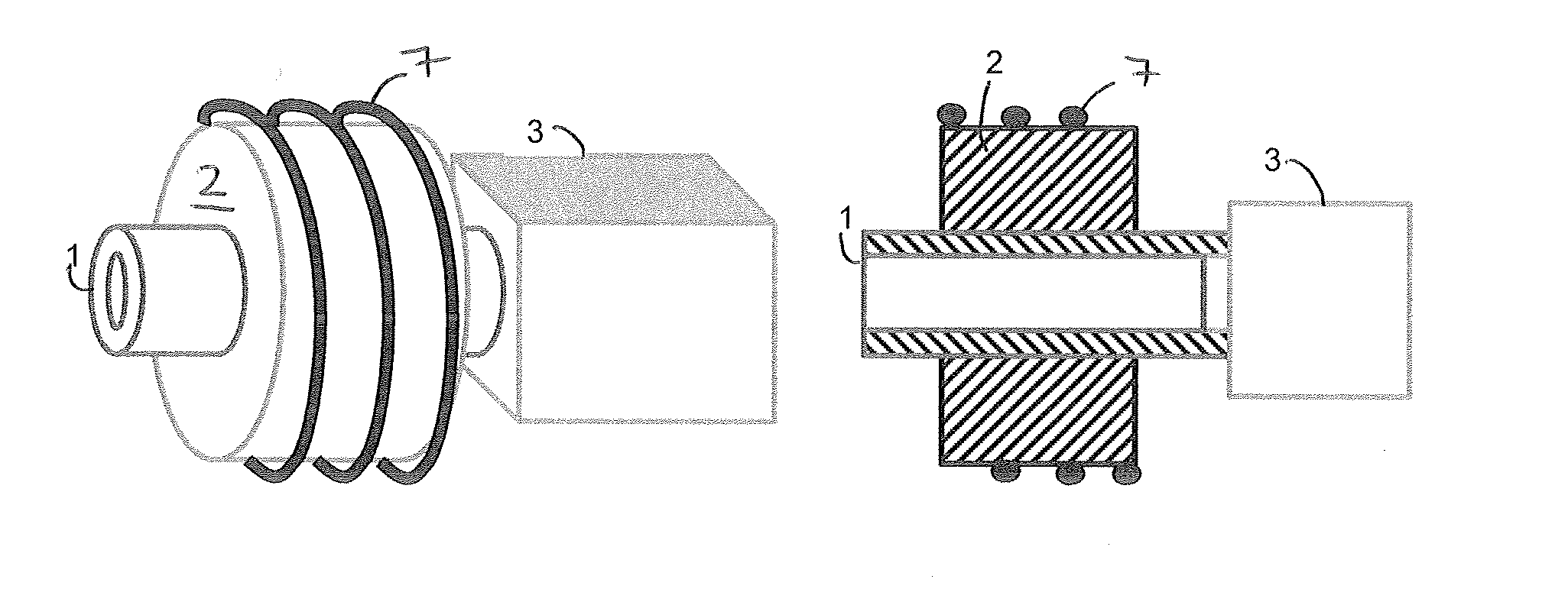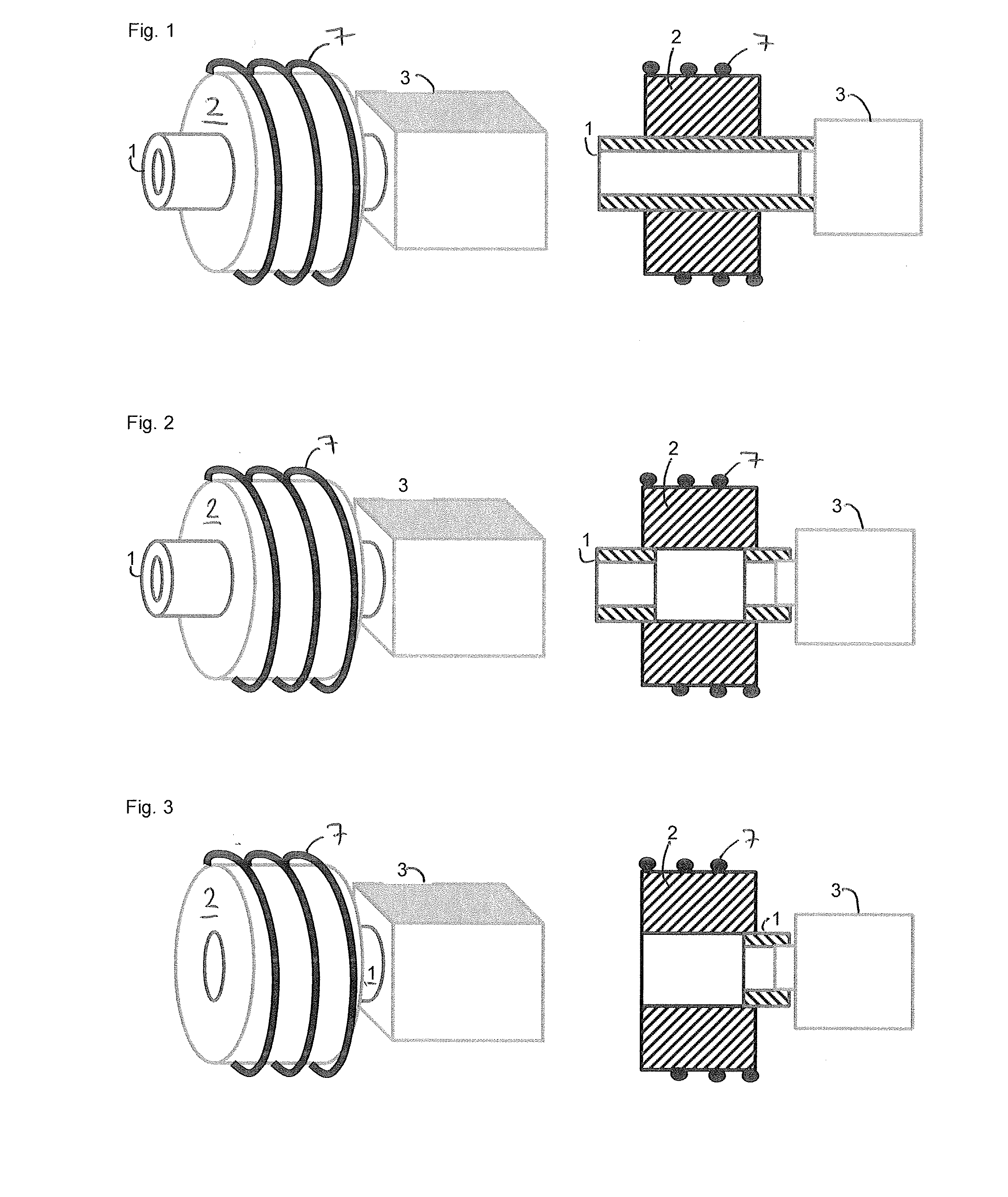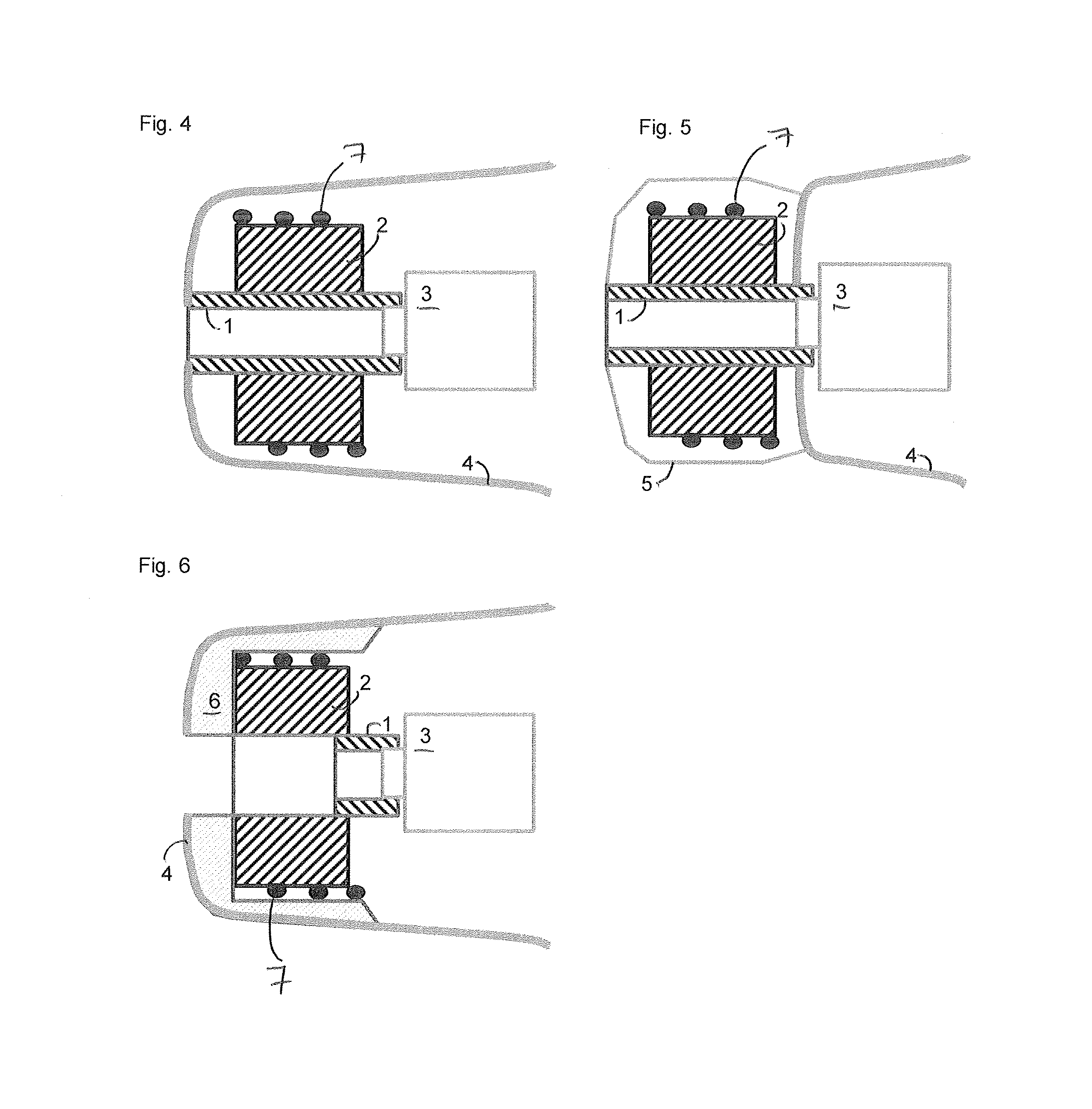Antenna for hearing device, ear tip and hearing device provided with such an antenna
a technology for hearing devices and antennas, which is applied in the field of hearing devices, can solve the problems of significant design difficulties, occupying significant space in the hearing device, and modern hearing devices are extremely small, and achieves the effects of improving the individual's acoustical perception, avoiding acoustic signals, and simple rotational construction
- Summary
- Abstract
- Description
- Claims
- Application Information
AI Technical Summary
Benefits of technology
Problems solved by technology
Method used
Image
Examples
first embodiment
[0031]FIG. 1 illustrates an antenna module according to the invention. This antenna module comprises a core 2 formed substantially as a hollow cylinder, i.e. a cylinder with an axial passageway. Although a hollow cylindrical core is illustrated in the figures with a cylindrical axial passageway, many other shapes are foreseen as falling within the scope of the current invention. The core can be cylindrical, conical, tapered, funnel-shaped, trumpet shaped, of oval longitudinal cross-section, or any other convenient shape. The axial passageway can be cylindrical, trumpet-shaped, horn-shaped, conical, tapered, -funnel-shaped, or any other convenient shape. The shape of the passageway can thereby be conformed so as to tailor the acoustic properties of the overall sound passageway. The core may be constructed of a magnetically permeable material, such as ferrite, or may be constructed of a non-magnetic material such as plastic. Around the core 2 is an electrically-conductive winding 7 in...
second embodiment
[0032]FIG. 2 illustrates an antenna module according to the invention. The core 2 and the winding 7 are substantially identical to those in FIG. 1, however two pieces of tubing 1 are provided, one in each end of the axial passageway in the core 2. One of these sections of tubing is connected with the acoustic output of the receiver 3, and the other, in use, will transmit the acoustic output to the user. It should be noted that in this embodiment the passageway through the core 2 itself forms part of the acoustic pathway from the receiver 3 to the user.
third embodiment
[0033]FIG. 3 illustrates an antenna module according to the invention, which differs from that of FIG. 2 only in that a single, short piece of tube 1 is used to connect the passageway through the core 2 to the receiver 3. In this embodiment, the majority of the acoustic pathway from the receiver 3 to the user is constituted by the passageway through the core 2.
[0034]FIG. 4 illustrates the antenna module according to the first embodiment of the invention integrated into the shell 4 of an ear tip or a hearing device. A shell may be customised to fit a particular wearer or may by a standard shape. Although the antenna module according to the first embodiment is illustrated here, it is evident that any of the other embodiments could be substituted in its place.
[0035]FIG. 5 illustrates the antenna module according to the first embodiment of the invention integrated into an ear tip or a hearing device comprising a shell 4 but situated outside of the custom shell 4. In this case, the anten...
PUM
 Login to View More
Login to View More Abstract
Description
Claims
Application Information
 Login to View More
Login to View More - R&D
- Intellectual Property
- Life Sciences
- Materials
- Tech Scout
- Unparalleled Data Quality
- Higher Quality Content
- 60% Fewer Hallucinations
Browse by: Latest US Patents, China's latest patents, Technical Efficacy Thesaurus, Application Domain, Technology Topic, Popular Technical Reports.
© 2025 PatSnap. All rights reserved.Legal|Privacy policy|Modern Slavery Act Transparency Statement|Sitemap|About US| Contact US: help@patsnap.com



